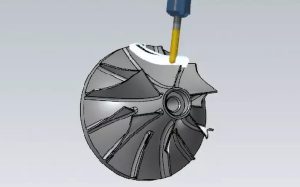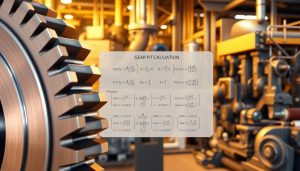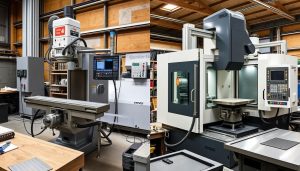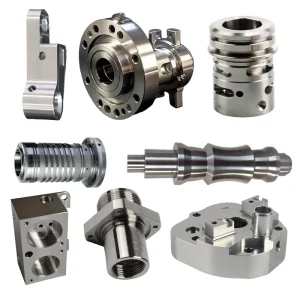In the dynamic world of Computer Numerical Control (CNC) machining, a fundamental component that enables seamless automation and precision is the M Code. This powerful set of machine control codes plays a crucial role in managing the non-geometric functions of CNC machines, allowing for enhanced efficiency, flexibility, and safety in manufacturing processes.
M Codes, short for Miscellaneous Codes, are a vital part of the CNC programming language, working in tandem with the more well-known G Codes that govern the geometric movements of the machine tool. By providing a range of functions, from controlling the spindle and coolant systems to facilitating tool changes, M Codes empower CNC operators and programmers to fine-tune and optimize their machining operations.
Understanding the definition, types, and applications of M Codes is essential for anyone involved in the CNC machining industry, whether they are seasoned professionals or newcomers to the field. This article delves into the intricacies of M Codes, exploring their role in CNC programming, the various functions they serve, and how they contribute to the overall success of manufacturing projects.
What is M Code in CNC Programming?
In the world of Computer Numerical Control (CNC) machining, M code plays a crucial role in controlling the non-cutting functions of the machine. M code, short for “miscellaneous code,” is a set of machine control codes that instruct the CNC machine to perform specific actions, such as starting or stopping the spindle, controlling the coolant, or executing tool changes.
Definition of M Code
M code is a programming language used in CNC machining to control the non-geometric aspects of the manufacturing process. Unlike G code, which is responsible for defining the tool path and motion control, M code is used to manage the ancillary functions of the CNC machine. These M codes are essential for ensuring the proper operation and coordination of the various components within the machine, allowing for a seamless and efficient manufacturing process.
How M Code Relates to CNC Operations
While G code focuses on the cutting and positioning of the tool, M code is responsible for controlling the auxiliary functions that support the overall CNC operation. M codes can be used to perform a wide range of tasks, including:
- Spindle control (starting, stopping, and speed adjustment)
- Coolant and lubrication management
- Tool changing and magazine control
- Miscellaneous functions like program stop, program end, or part probing
By integrating M code with G code, CNC programmers can create comprehensive and precise manufacturing instructions, ensuring that the machine operates at its full potential and produces high-quality parts consistently.
Types of M Codes and Their Functions
In the realm of CNC (Computer Numerical Control) machining, M codes play a crucial role in controlling various non-geometric functions of the machine. These specialized commands govern a wide range of operations, from spindle control to tool changes, making them an integral part of the machining process. Let’s dive into the different types of M codes and their specific functions.
M Codes for Spindle Control
M codes related to spindle control are essential for managing the speed, direction, and on/off state of the spindle. Common examples include M03 (Spindle Start Clockwise), M04 (Spindle Start Counter-Clockwise), and M05 (Spindle Stop), which allow machinists to precisely control the spindle’s behavior during the cutting process.
M Codes for Coolant and Lubrication Control
Proper cooling and lubrication are vital for efficient and safe CNC machining. M codes such as M07 (Mist Coolant On), M08 (Flood Coolant On), and M09 (Coolant Off) enable operators to manage the flow and type of coolant used during the operation, ensuring optimal performance and extended tool life.
M Codes for Tool Changes
Tool changes are a crucial aspect of CNC machining, and M codes play a vital role in this process. M06 (Tool Change) instructs the machine to perform a tool change, while M19 (Spindle Orientation) aligns the spindle for accurate tool positioning and replacement.
Miscellaneous M Codes
In addition to the aforementioned categories, there are various other M codes that serve a range of miscellaneous functions. These include M00 (Program Stop), M01 (Optional Program Stop), M02 (Program End), and M30 (Program End and Rewind), which provide essential control and flow management capabilities within the CNC program.
Understanding the diverse types of M codes and their specific functions is crucial for CNC machinists and programmers to effectively utilize the full capabilities of their machines and optimize the manufacturing process. By mastering the implementation of these essential commands, professionals can enhance efficiency, improve productivity, and ensure high-quality results in their CNC machining operations.
| M Code | Function |
|---|---|
| M03 | Spindle Start Clockwise |
| M04 | Spindle Start Counter-Clockwise |
| M05 | Spindle Stop |
| M07 | Mist Coolant On |
| M08 | Flood Coolant On |
| M09 | Coolant Off |
| M06 | Tool Change |
| M19 | Spindle Orientation |
| M00 | Program Stop |
| M01 | Optional Program Stop |
| M02 | Program End |
| M30 | Program End and Rewind |

How M Codes Work in CNC Machining
In the world of computer numerical control (CNC) machining, M codes play a crucial role alongside their counterparts, G codes. While G codes handle the geometric functions and motion control, M codes are responsible for managing the non-geometric operations within the CNC process. Understanding the interplay between these two codes is essential for mastering the intricacies of CNC programming.
M Code vs G Code: Key Differences
The primary distinction between M code and G code lies in their respective functions. G codesfocused on directing the movement and positioning of the CNC machine’s cutting tool, ensuring precise geometric shapes and dimensions. On the other hand, M codes are responsible for controlling the machine’s auxiliary functions, such as spindle rotation, coolant flow, and tool changes.
How M Codes Control Non-Geometric Functions
While G codes govern the physical movements of the CNC machine, M codes are the key to managing the non-geometric aspects of the machining process. These auxiliary functions are essential for ensuring the overall efficiency and quality of the final product. M codes allow CNC operators to precisely control elements like:
- Spindle start, stop, and speed
- Coolant and lubrication systems
- Tool changes and magazine operations
- Program start, stop, and pause
- Miscellaneous functions like work coordinate system changes
By seamlessly integrating M codes into the CNC programming, manufacturers can optimize their machining processes, ensuring consistent, high-quality outcomes while maintaining tight control over the non-geometric aspects of the operation.

Applications of M Code in CNC Machining
The versatile M code plays a crucial role in various industrial sectors, enhancing precision and efficiency in high-precision manufacturing processes. From the dynamic automotive industry to the cutting-edge aerospace field, M code applications are revolutionizing the way components are fabricated.
M Code in Automotive Manufacturing
In the ever-evolving automotive manufacturing landscape, M codes are instrumental in ensuring the production of intricate, high-quality parts. These specialized codes enable seamless control over essential CNC operations, such as spindle speed adjustments, coolant management, and tool changes. This level of precision is vital for the fabrication of complex automotive components, from engine blocks to suspension systems.
M Code in Aerospace and High-Precision Industries
The aerospace industry, renowned for its demand for exceptional precision, heavily relies on the capabilities of M codes. In the production of aircraft components, M codes facilitate the execution of delicate tasks, such as the control of advanced cutting tools and the monitoring of specialized lubricants. This attention to detail is essential for ensuring the safety and reliability of aerospace parts, where even the slightest deviation can have significant consequences.
| Industry | M Code Applications | Benefits |
|---|---|---|
| Automotive Manufacturing |
|
Precision, efficiency, and consistency in component fabrication |
| Aerospace |
|
Exceptional accuracy, reliability, and safety in high-precision manufacturing |
The versatility of M code applications extends beyond the automotive and aerospace sectors, finding use in a wide range of high-precision industries where the demand for quality and consistency is paramount. As CNC technology continues to evolve, the role of M codes in driving innovation and optimizing manufacturing processes will only become more prominent.
“M codes are the unsung heroes of CNC machining, enabling manufacturers to push the boundaries of what’s possible in high-precision component fabrication.”
Benefits of Using M Code in CNC Machines
The utilization of M code in CNC (Computer Numerical Control) machining brings about a myriad of advantages that enhance the efficiency, flexibility, and overall performance of manufacturing operations. By harnessing the power of M code, manufacturers can unlock a new realm of possibilities, optimizing their CNC machine control and driving manufacturing automation to greater heights.
Enhanced Control and Flexibility
M code offers CNC machine operators an unparalleled level of control and flexibility. With a diverse range of M codes at their disposal, they can precisely manage various non-geometric functions, such as spindle control, coolant and lubrication regulation, and tool changes. This granular control empowers manufacturers to fine-tune their processes, ensuring optimal performance and product quality.
Improved Efficiency and Automation
The implementation of M code in CNC machining can significantly boost manufacturing automation and improve overall efficiency. By automating non-cutting tasks through M code commands, operators can streamline their workflows, minimize manual interventions, and increase productivity. This, in turn, leads to reduced cycle times, decreased labor costs, and enhanced throughput, ultimately contributing to a more competitive and profitable manufacturing operation.
| Benefit | Description |
|---|---|
| Enhanced Control and Flexibility | M code provides CNC machine operators with granular control over non-geometric functions, enabling precise management of spindle, coolant, lubrication, and tool change operations. |
| Improved Efficiency and Automation | The use of M code in CNC machining can automate non-cutting tasks, streamlining workflows, reducing cycle times, and increasing overall manufacturing productivity. |
“M code is the key to unlocking the true potential of CNC machining, empowering manufacturers to achieve new levels of control, flexibility, and efficiency in their operations.”
Challenges and Considerations with M Codes
While the versatility of M codes in CNC machining is unquestionable, there are certain challenges and considerations that operators and programmers must keep in mind. The complexity of M code programming can be a hurdle, as each code has its own unique set of parameters and requirements.
Complexity in Programming
Mastering the intricacies of M code programming is crucial for ensuring efficient and accurate CNC operations. With a wide range of codes available, each with its own specific functions and syntax, the learning curve can be steep. Programmers must have a deep understanding of the various M codes, their applications, and how they interact with other G codes and machine settings.
Troubleshooting Common M Code Issues
Unexpected behavior or errors during CNC machining can often be traced back to M code-related problems. Troubleshooting these issues requires a methodical approach, as the root cause may lie in the programming, machine configuration, or even operator error. Familiarizing oneself with common M code problems, such as incompatible code combinations, syntax errors, or machine parameter conflicts, is crucial for efficient problem-solving.
FAQ
What is M Code in CNC Programming?
How Does M Code Relate to CNC Operations?
What Are the Different Types of M Codes and Their Functions?
- M Codes for Spindle Control: Control the start, stop, and speed of the spindle.
- M Codes for Coolant and Lubrication Control: Manage the flow and application of coolant and lubricants during the machining process.
- M Codes for Tool Changes: Facilitate the automatic or manual exchange of tools in the machine.
- Miscellaneous M Codes: Perform various other functions like program stop, program end, or optional stop.
How Do M Codes Differ from G Codes in CNC Programming?
How Do M Codes Control Non-Geometric Functions in CNC Machining?
What Are the Applications of M Code in CNC Machining?
- Automotive Manufacturing: M codes are used to control spindle speed, coolant flow, and tool changes in the production of automotive components and parts.
- Aerospace and High-Precision Industries: M codes are essential for ensuring the precise control and coordination of non-cutting functions in the manufacturing of high-precision aerospace and medical components.
What Are the Benefits of Using M Code in CNC Machines?
- Enhanced Control and Flexibility: M codes allow for precise control over non-cutting functions, enabling manufacturers to fine-tune and optimize their machining processes.
- Improved Efficiency and Automation: By automating non-cutting tasks, M codes help increase the overall efficiency and productivity of CNC machining operations.
What Are the Challenges and Considerations with M Codes?
- Complexity in Programming: Mastering the extensive library of M codes and their proper implementation in CNC programming can be a complex and time-consuming task for operators and programmers.
- Troubleshooting Common M Code Issues: Identifying and resolving issues related to M code programming or execution can require a deep understanding of CNC machine and control system functionality.





